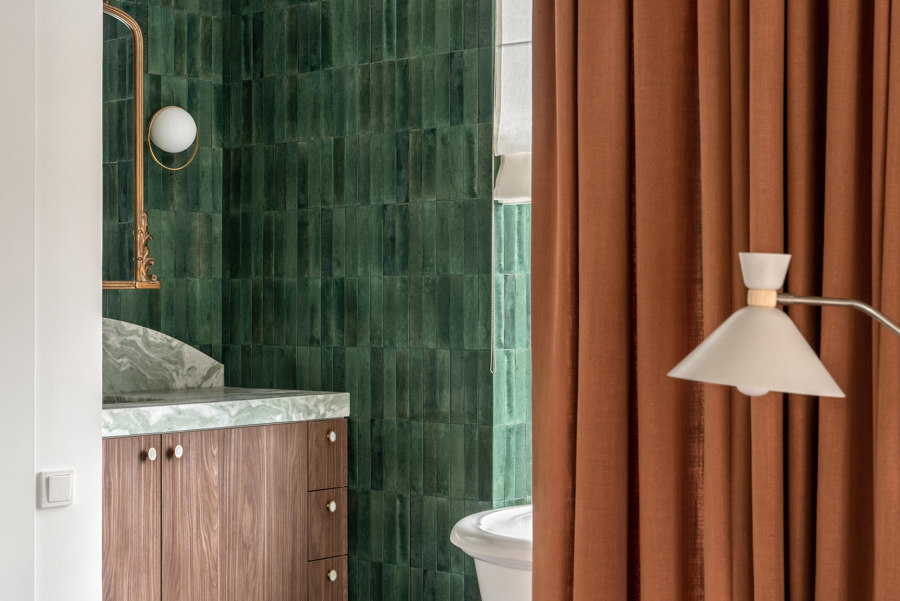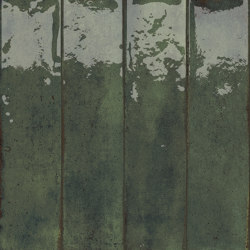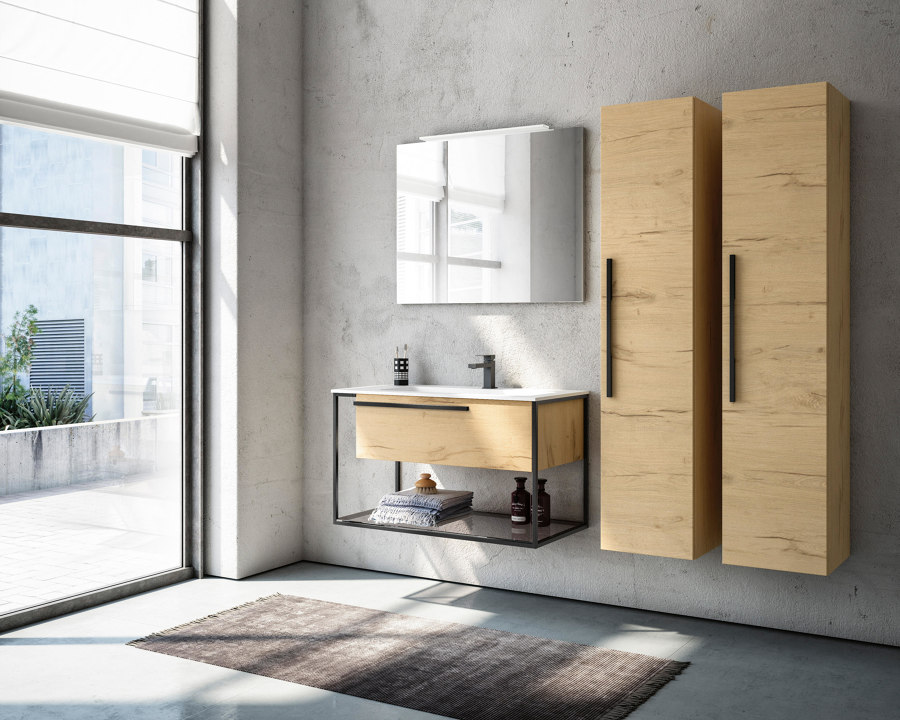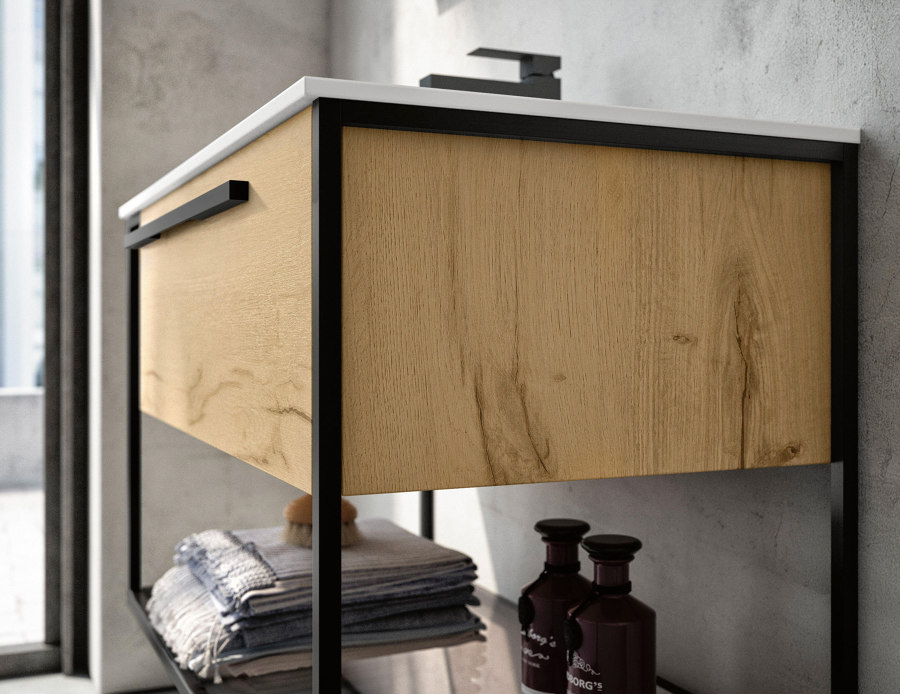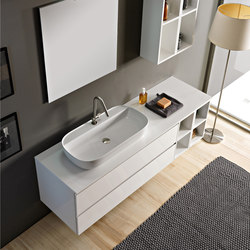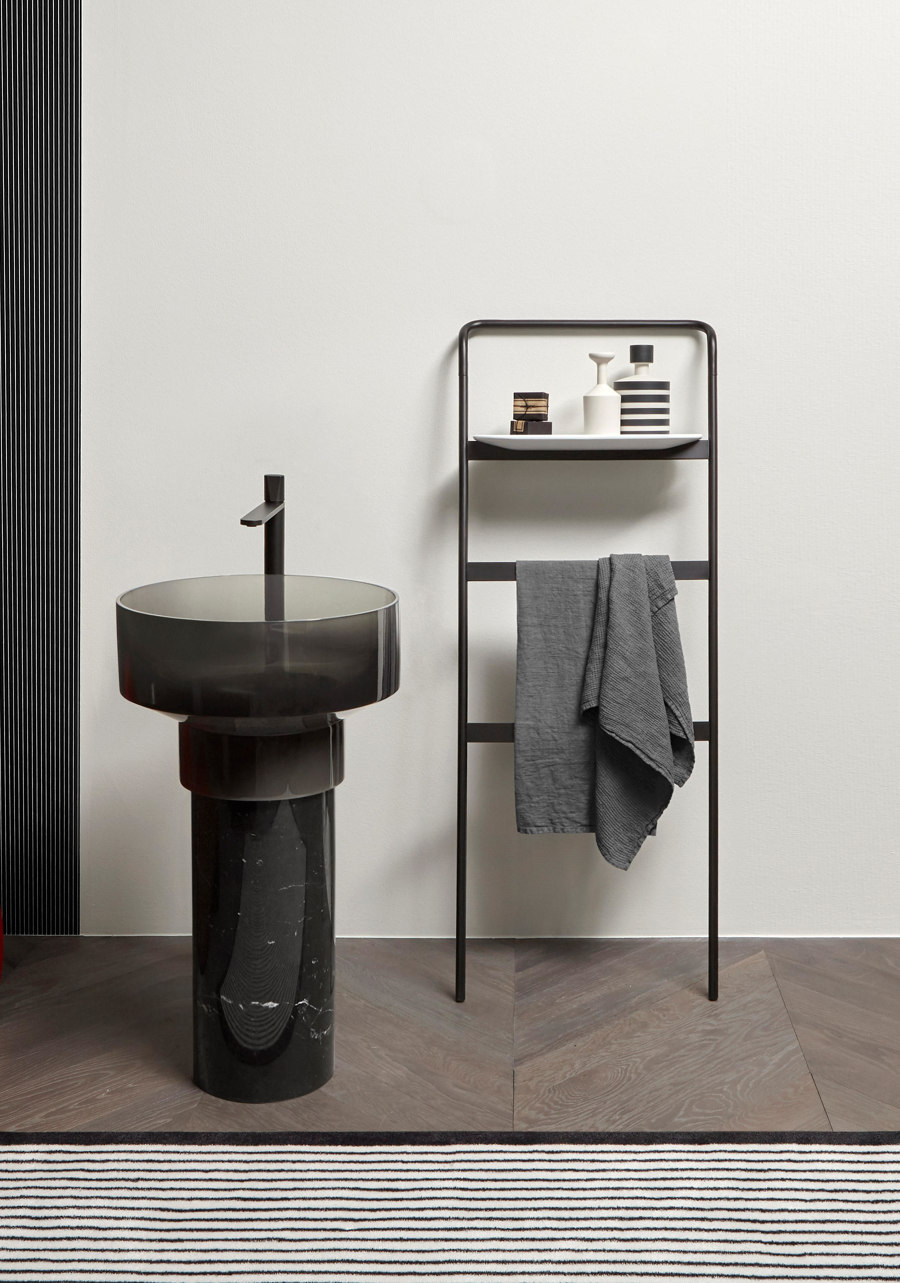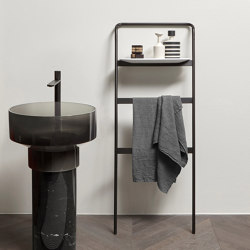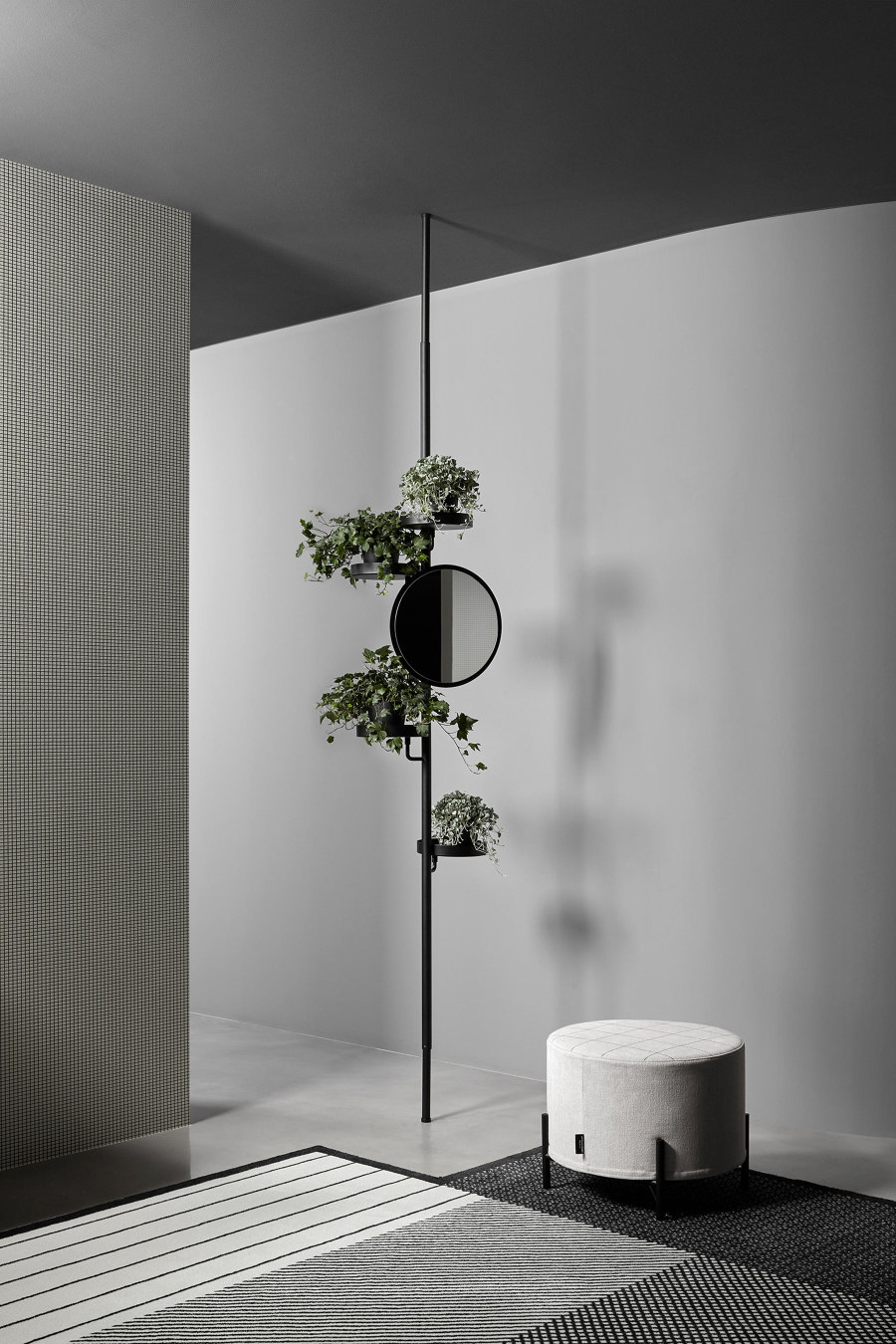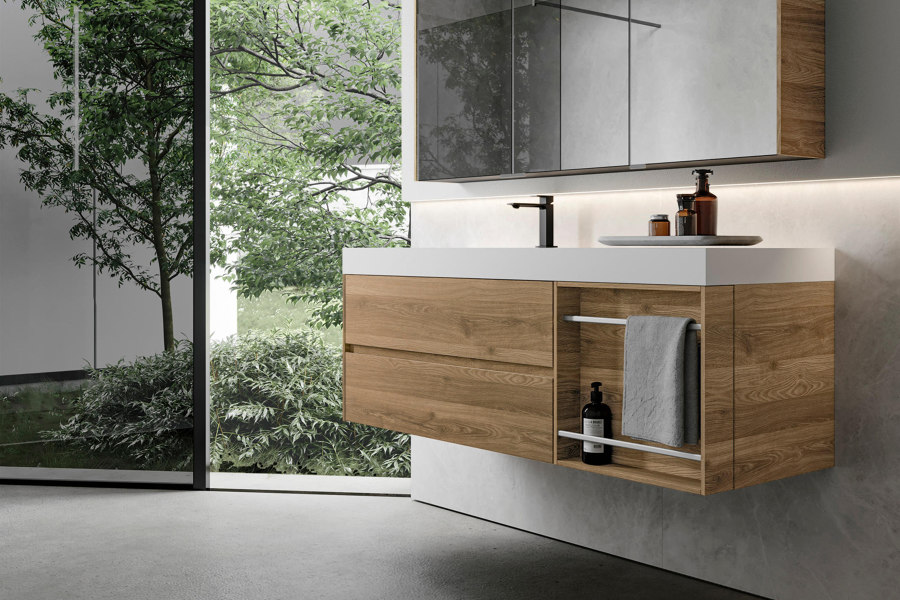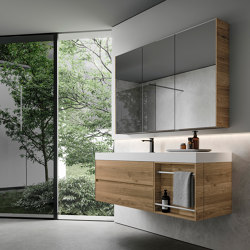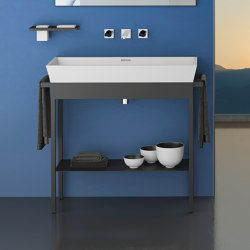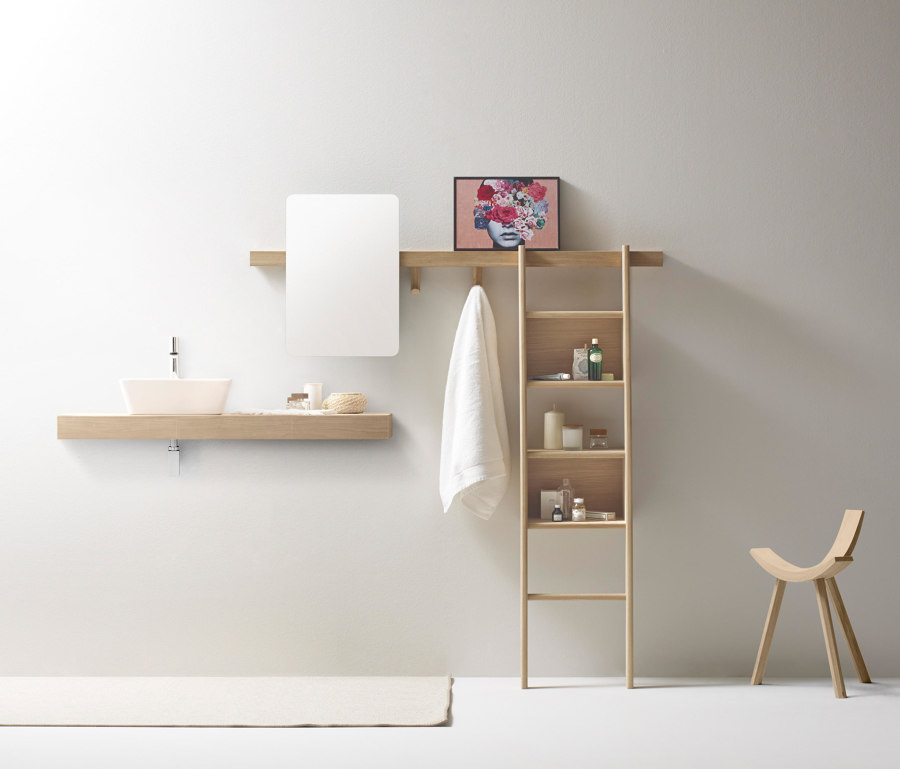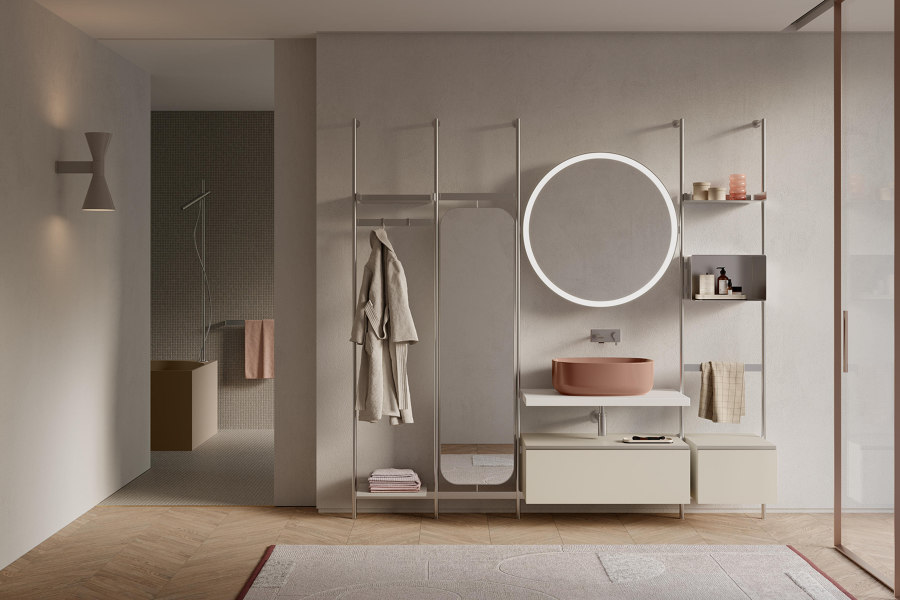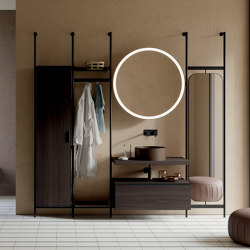The importance of storage for functional bathroom basins
Texte par James Wormald
27.10.23
These recent examples of composed bathroom storage setups help their users create the luxury bathroom look they want, whilst keeping their most personal secrets hidden.
The Cōmodo Bad Gastein hotel in Austria provides guests with open shelving to empty their wash bags, without ruining the luxurious spread of toiletries and ceramics underneath. Photo: Pion Studio

The Cōmodo Bad Gastein hotel in Austria provides guests with open shelving to empty their wash bags, without ruining the luxurious spread of toiletries and ceramics underneath. Photo: Pion Studio
×It’s said you can learn a lot about someone by rifling through the contents of their bathroom cabinet. But it’s more than just the storage that comes under scrutiny. In preparation, we dress our bathrooms like exhibitions of our (projected) personality – prompting the most luxurious products front and centre while keeping the rest tucked away.
We dress our bathrooms like exhibitions of our (projected) personality
As playful and colourful bathroom trends take hold of contemporary interiors, so too does keeping surfaces clear and unblemished. This means that storage solutions are playing a more vital role in our sanitary spaces, and those with the highest functionality are rising to the top. The following products clean up a bathroom’s usability while revealing only what we want others to see.
The Old&New apartment’s extensive storage capacity (top), Ideagroup’s sculptural Dolcevita unit with glass-edged drawers (middle) and Duravit’s L-Cube unit with segregated drawers (bottom). Photo: Andrey Bezuglov (top)
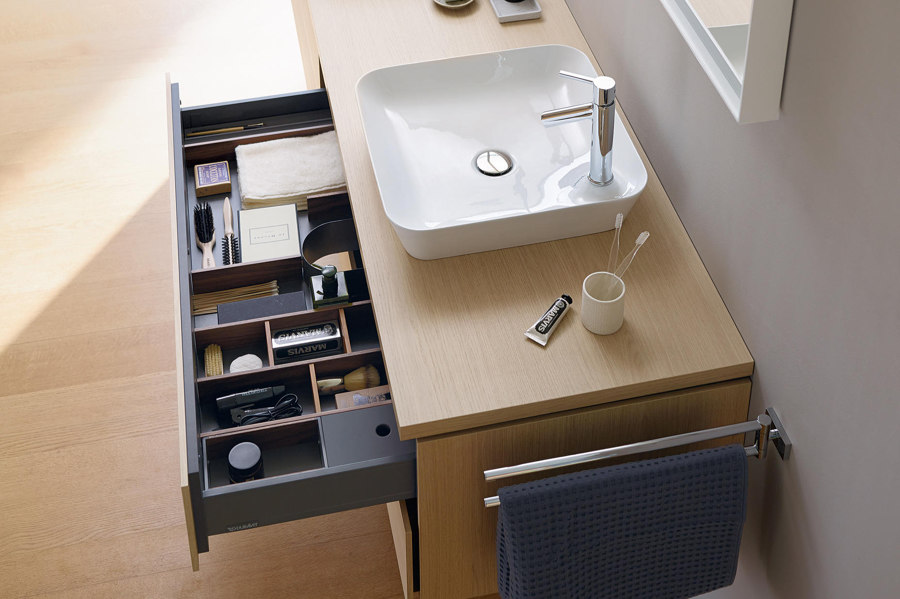
The Old&New apartment’s extensive storage capacity (top), Ideagroup’s sculptural Dolcevita unit with glass-edged drawers (middle) and Duravit’s L-Cube unit with segregated drawers (bottom). Photo: Andrey Bezuglov (top)
×Out of sight, out of mind: closed bathroom storage
The bathroom of the Old&New apartment in Kyiv, Ukraine, for example, by Between the Walls, does exactly as its name suggests, combining colour combinations of vintage emerald green, creamy marble and gold accents with contemporary curves and edges. Meanwhile, rich wooden cabinetry helps to keep the luxurious surfaces above clear and visible by offering accessible space below.
These Dolcevita vanity drawers from Ideagroup similarly combine vibrant colour with sculptural contemporary curves, for example. The drawers themselves are edged with glass, helping to draw light inside. And speaking of inside the drawer, Duravit’s L-Cube cabinets use natural wood inserts to segregate the space. A cut-out section makes way for the waste pipe, allowing the drawer to sit higher in the cabinet.
GB Group’s black aluminium framed Underground vanity unit (top, middle) and Scarabeo Ceramiche’s wall-hung Phorma shelving (bottom) both combine open and closed storage, keeping towels in easy reach and other items hidden
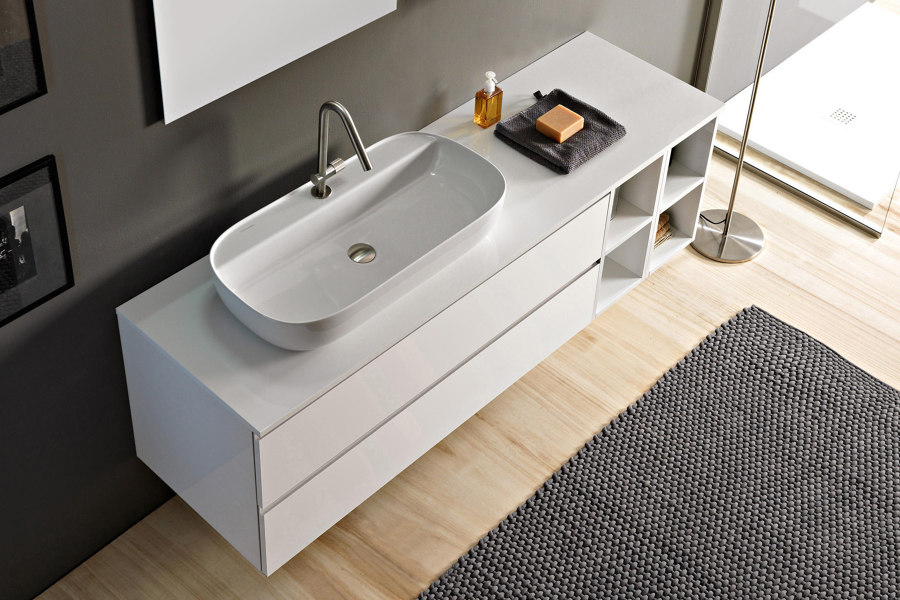
GB Group’s black aluminium framed Underground vanity unit (top, middle) and Scarabeo Ceramiche’s wall-hung Phorma shelving (bottom) both combine open and closed storage, keeping towels in easy reach and other items hidden
×Always-open accessibility with open shelving
While the act of opening a cupboard door may not sound difficult, the additional obstacle makes a big difference to usability and functionality. Fresh towels can be grabbed quickly with one hand from the open shelf underneath the Underground cabinet from GB Group, for example. And those staying in the recently opened Cōmodo Bad Gastein hotel in Austria can empty their wash bags into the washrooms’ open shelves without forgetting to pack them up again.
Keeping everything out in the open means there’s nowhere to hide
Keeping everything out in the open, however, means there’s nowhere to hide. Anything carelessly misplaced makes an instant stain on the aesthetic, and ensuring everything remains in place sometimes takes more effort than using it is worth. Bathroom storage that combines both open and closed sections, like Scarabeo Ceramiche’s Phorma cabinets, gives the best of both options.
antoniolupi’s Mrwolf bathroom towel ladder (top) and Cactus storage pole (bottom) both offer storage alongside freestanding basins like the brand’s Borghi range (top). And Duravit’s DuraStyle (bottom) also raises open and closed storage
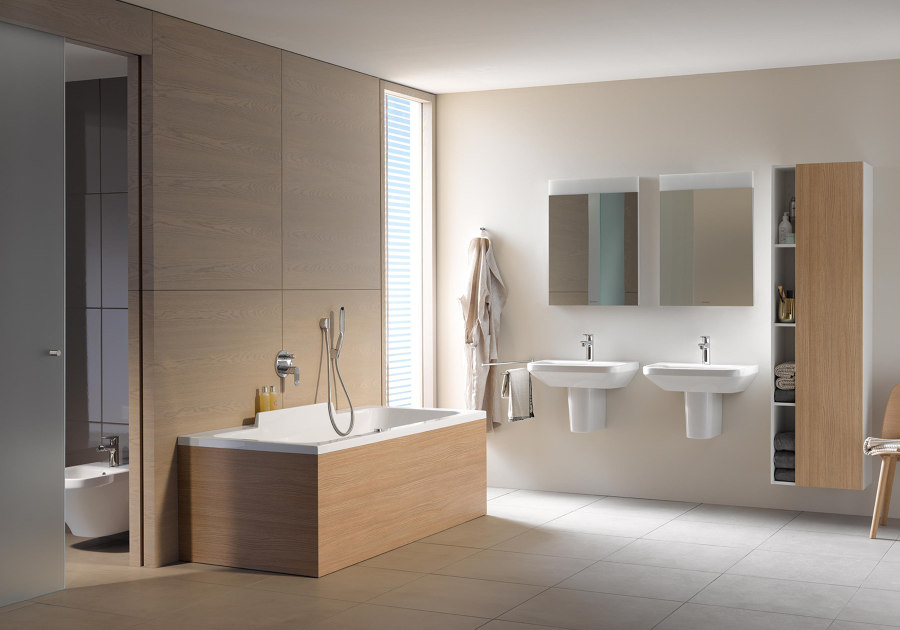
antoniolupi’s Mrwolf bathroom towel ladder (top) and Cactus storage pole (bottom) both offer storage alongside freestanding basins like the brand’s Borghi range (top). And Duravit’s DuraStyle (bottom) also raises open and closed storage
×Keeping accessibility within reach with raised storage
Utilising space underneath the basin for storage allows bathrooms to keep their surfaces clear, but when there’s no surface to use, the necessary storage needs to find another home. antoniolupi’s standalone washbasins add a breathtaking presence to any designer bathroom, for example, but for functionality’s sake, a towel and soapdish can’t be too far away.
For functionality’s sake, a towel and soapdish can’t be too far away
The manufacturer’s Mrwolf unit accompanies freestanding sinks perfectly, providing towel rail and shelf at the perfect height, while the Cactus storage pole can hold a variety of accessories such as towels, soap dispensers, mirrors or even plantlife at heights of the users’ choosing. Elsewhere, simpler tall storage units like Duravit’s DuraStyle cabinet combine open and closed storage to offer accessible and private spaces for both categories of item at a comfortable, reachable height.
Both Ideagroup’s Nyù 14 vanity unit (top) and Glass Design’s Genova (bottom) have considered the entire narrative surrounding a basin’s use, facilitating the use of hand towels by keeping them near and dry
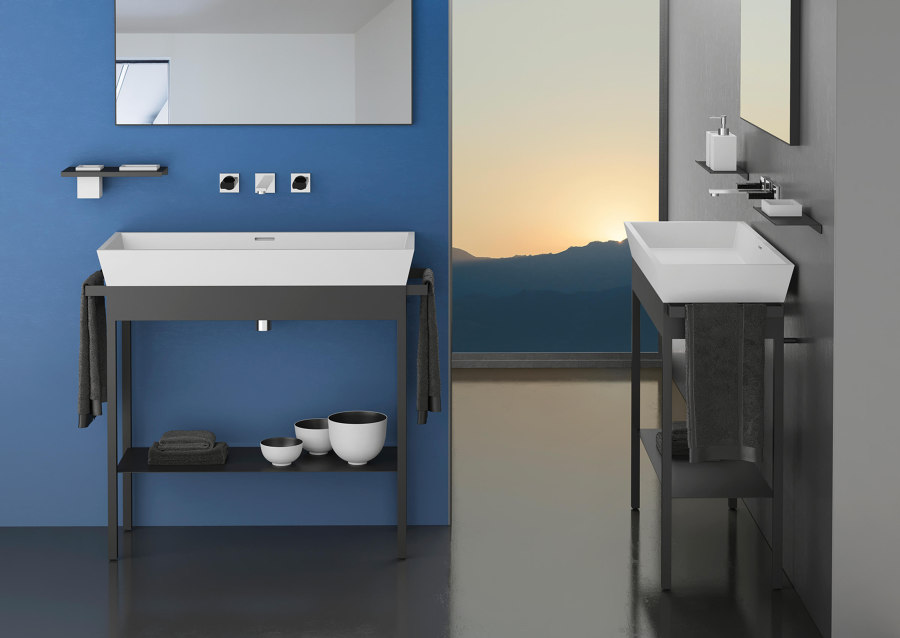
Both Ideagroup’s Nyù 14 vanity unit (top) and Glass Design’s Genova (bottom) have considered the entire narrative surrounding a basin’s use, facilitating the use of hand towels by keeping them near and dry
×Spaces for hanging towels out to dry
The headache of what to do with wet towels affects interior designers of bathrooms just as much as it does frustrated sharers of living space. Fluffy in texture and vibrant in colour, towels offer wonderful palette accents and are perfectly placed in visible storage spaces. Once they’ve been used, however, they can be difficult to know what to do with.
To limit dripping watermarks on bathroom surfaces, towels must be left near the basin and with enough surrounding airflow to dry sufficiently between uses. The Nyù unit from Ideagroup provides a towel-drying niche set within its cabinet, while the extra-wide Genova washstand from Glass Design puts towel rails at both ends. Meaning two users can keep their own.
The Zutik shelving solution from Alki (top) and the modular Over system from NIC Design (top, middle) combine mirrors with hooks and shelves nearby
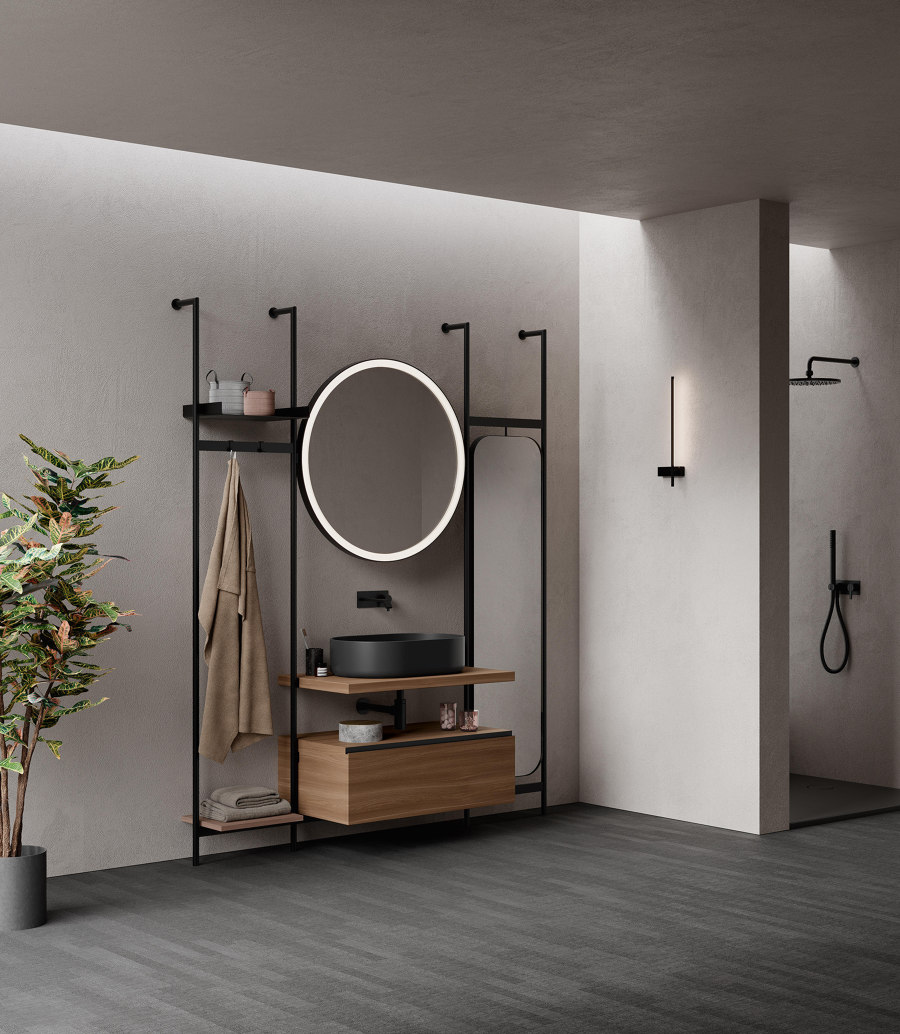
The Zutik shelving solution from Alki (top) and the modular Over system from NIC Design (top, middle) combine mirrors with hooks and shelves nearby
×Keeping mirrors touch- and smudge-free with nearby storage
Mirror cabinets are a good way of hiding items in shelving, without using any more wall space. But while placing skincare and sanitary products near to the mirror seems like a good idea, putting them behind means the mirror is regularly smudged. By fulfilling storage needs elsewhere in the bathroom, mirrors can remain clean and untouched, and staying closer to the wall allows them a wider view.
The Zutik shelving from manufacturer Alki, for example, provides storage space, including shelving and towel hooks, at a comfortable height and within easy reach of the mirror’s subject. Meanwhile, NIC Design’s modular Over system allows designers to create bespoke storage arrangements around the washstand, combining basin with mirror, shelving and hooks for towels and bathrobes, too.
© Architonic
Head to the Architonic Magazine for more insights on the latest products, trends and practices in architecture and design.

